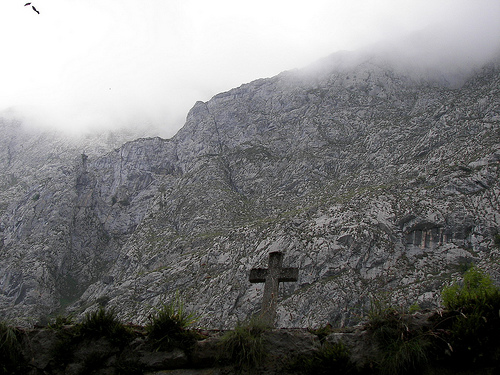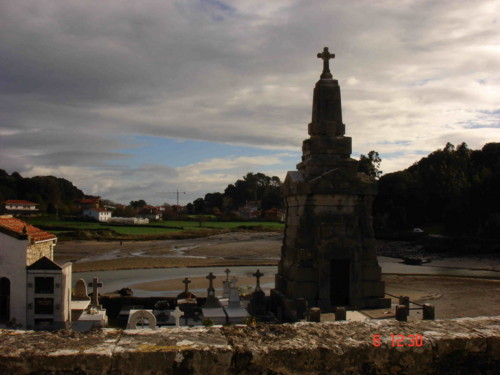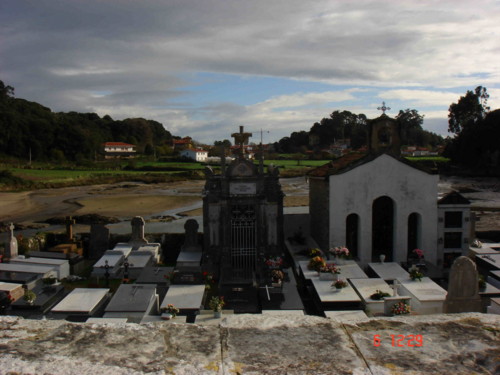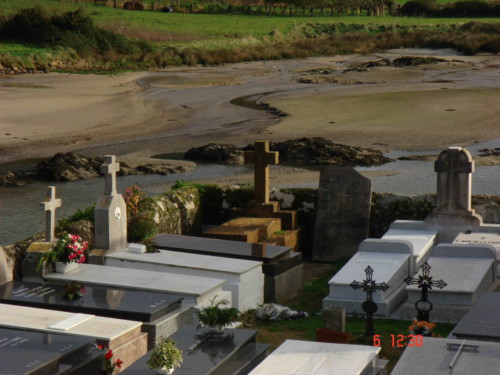Spain
Cemetery of Zamora
The cemetery of Zamora is called “San Atilano” though the saint’s remains are no longer in Zamora, but are now in Tarazona.
Cemetery of Zamora
In Zamora we can find a great representation of Romanesque Art with over twenty churches and a well-preserved historic centre.
Cemetery of Zamora
The cemetery is huge, so you will need at least three hours to walk around it fully. Given its size, the cleanliness and the amount of fresh flowers that can be seen comes as a surprise.
- Cemetery of Zamora
You can see niches, columbarium, mausoleums and tombs, many of which are richly decorated with wrought iron railings both modern and ancient. As usual in the area granite is often used for headstones and sculptures.
Cemetery of Zamora
Cemetery of Fermoselle, Zamora
Fermoselle is in the Natural Park of Arribes del Duero, in the region of Sayago, in the province of Zamora. Its name comes from Old Leonese dialect and means “hermosillo” (beautiful).
Cemetery of Fermoselle
It is near the border with Portugal and has a spectacular landscape as it is on top of a hill. It has around 1,600 inhabitants.
- Cemetery of Fermoselle
In the cemetery of Fermoselle we can see ancient tombs along with others that are quite new, which makes a nice contrast.
- Cemetery of Fermoselle
Granite abounds throughout the region and we see this on the gravestones, which unlike the cemeteries of Fariza and Badilla it does have, and in most ornaments.
Cemetery of Fermoselle
We can observe the use of wrought iron and the abundance of trees in this beautiful and well-kept cemetery.
- Cemetery of Fermoselle
Visitors regularly bring fresh flowers and, unlike other cemeteries in nearby villages, the cemetery of Fermoselle has quite a few niches, as spotless as the rest.
- Cemetery of Fermoselle
Cemetery of Bermillo de Sayago, Zamora
Bermillo is the head of the region of Sayago, southwest of the province of Zamora.
- Cemetery of Bermillo de Sayago
Bermillo has just under 1400 inhabitants who live primarily from farming, industry and the services sector without forgetting the craft of ceramics, leather, weaving, wood, wicker, straw, stone and wrought iron.
- Cemetery of Bermillo de Sayago
As we can see in the cemetery of Bermillo de Sayago, granite is an abundant material in the area.
Cemetery of Bermillo de Sayago
This is refvealed both in the ancient tombs, which remain despite the passing years, as the new ones that shine on sunny days.
- Cemetery of Bermillo de Sayago
The cleanliness and neatness that appears in the inside of the cemetery of Bermillo contrasts with the outside, where we found a cross discarded beside the remains of dried flowers for garbage.
Cemetery of Bermillo de Sayago
Cemetery of Fariza de Sayago, Zamora
- Cemetery of Fariza de Sayago
Its name, of Arabic origin, means “The Castle”. Fariza, with only 675 inhabitants, is located in the Natural Park of Arribes del Duero, near the border with Portugal.
Cemetery of Fariza de Sayago
For a long time various cultures have intermingled in Fariza; therefore it has pre-Roman, Roman and Arabic settlements.
Cemetery of Fariza de Sayago
This cemetery, like the cemetery of Badilla, has a peculiarity which is not unique in this region: the graves can not have gravestones, by order of the City Council, so it looks different but is still very carefully tended to, neat and tidy.
Cemetery of Fariza de Sayago
Cemetery of Badilla de Sayago, Zamora
Badilla is part of the region of Sayago, in the province of Zamora. Its name comes from “vado” (ford), as it is the way to go to Portugal from Spain. It is part of the Arribes del Duero Natural Park and it is very close to the border, opposite Miranda do Douro.
Cemetery of Badilla de Sayago
It only has about 100 inhabitants, which in summer easily reach 500. You can notice the abundance of granite in the area when you look at the cemetery crosses.
- Cemetery of Badilla de Sayago
The cemetery of Badilla has, like the cemetery of Fariza, a peculiarity which is not unique in this region: by law, there can not be tombstones covering the graves; therefore it looks different from what we’re used to seeing.
- Cemetery of Badilla de Sayago
In some areas it is quite neat and carefully taken care of, but visitors everywhere cover the graves with flowers, providing lots of colour and a sense of order to the setting.
- Cemetery of Badilla de Sayago
Cemetery of Bulnes, Asturias
Bulnes is a village of 23 inhabitants in the municipality of Cabrales from which there is a view of Pico Urriellu (the mythical Naranjo de Bulnes), which has an altitude of 2,519 meters.
Cemetery of Bulnes
Bulnes is 650 meters above sea level and until a few years ago it could only be reached on foot. In order to fix the isolation in 2001 the Bulnes funicular was opened. It runs through a tunnel of 2,227 meters long and 4.5 wide with a slope of nearly 20%, and leads to the village in seven minutes.

Cemetery of Bulnes
Formerly the cemetery was roofed in order to be able to bury in winter due to the heavy snowfall that troubled the already unpleasant task.
Cemetery of Bulnes
The cemetery of Bulnes is the poorest I’ve ever seen. Some graves are marked with crosses which are only two sticks of wood bound with a wire with the name of the deceased painted on by brush.
- Cemetery of Bulnes
Cemetery of Comillas, Cantabria
The marble statue of the Exterminator Angel presides over the entrance to the cemetery of Comillas, which dates from the late nineteenth century.
Cemetery of Comillas
The cemetery of Comillas is located near the sea, on a mound. Its monumental facade was declared of Cultural Interest in 1983.
Cemetery of Comillas
It currently occupies the land surrounding the ruins of a fifteenth-century church, which remains protected by a stone wall topped with pinnacles. In 1893 the architect Lluis Domenech i Montaner was responsible for expanding and improving the cemetery, in which some arches and walls have been preserved as ornaments. Inside this cemetery there are several large mausoleums and abundant sculptures.
Cemetery of Comillas
Cemetery of Luarca, Valdés
Luarca is the capital of the Council of Valdés. This cemetery, which was built in 1813, is on the promontory known as La Atalaya (The Watchtower), on the edge of the Cantabrian Sea.
Cemetery of Luarca
Cemetery of Luarca
The cemetery of Luarca has wonderful modernist mausoleums and splendid views of the sea, the village, the lighthouse and the harbour. As it is on a slope, the tombs are located on terraces.
Cemetery of Luarca
Cemetery of Luarca
The Nobel Prize in medicine and physiology in 1959, Severo Ochoa, is buried in this beautiful cemetery.
Cemetery of Luarca
Cemetery of Luarca


